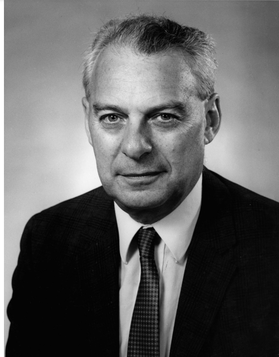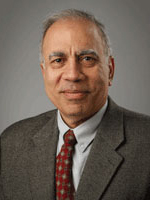
In physics, physical chemistry and engineering, fluid dynamics is a subdiscipline of fluid mechanics that describes the flow of fluids—liquids and gases. It has several subdisciplines, including aerodynamics and hydrodynamics. Fluid dynamics has a wide range of applications, including calculating forces and moments on aircraft, determining the mass flow rate of petroleum through pipelines, predicting weather patterns, understanding nebulae in interstellar space and modelling fission weapon detonation.
In fluid dynamics, turbulence or turbulent flow is fluid motion characterized by chaotic changes in pressure and flow velocity. It is in contrast to a laminar flow, which occurs when a fluid flows in parallel layers, with no disruption between those layers.

Computational fluid dynamics (CFD) is a branch of fluid mechanics that uses numerical analysis and data structures to analyze and solve problems that involve fluid flows. Computers are used to perform the calculations required to simulate the free-stream flow of the fluid, and the interaction of the fluid with surfaces defined by boundary conditions. With high-speed supercomputers, better solutions can be achieved, and are often required to solve the largest and most complex problems. Ongoing research yields software that improves the accuracy and speed of complex simulation scenarios such as transonic or turbulent flows. Initial validation of such software is typically performed using experimental apparatus such as wind tunnels. In addition, previously performed analytical or empirical analysis of a particular problem can be used for comparison. A final validation is often performed using full-scale testing, such as flight tests.
In fluid dynamics, the capillary number (Ca) is a dimensionless quantity representing the relative effect of viscous drag forces versus surface tension forces acting across an interface between a liquid and a gas, or between two immiscible liquids. Alongside the Bond number, commonly denoted , this term is useful to describe the forces acting on a fluid front in porous or granular media, such as soil. The capillary number is defined as:
Permeability in fluid mechanics and the Earth sciences is a measure of the ability of a porous material to allow fluids to pass through it.

In materials science, a porous medium or a porous material is a material containing pores (voids). The skeletal portion of the material is often called the "matrix" or "frame". The pores are typically filled with a fluid. The skeletal material is usually a solid, but structures like foams are often also usefully analyzed using concept of porous media.
Parviz Moin is a fluid dynamicist. He is the Franklin P. and Caroline M. Johnson Professor of Mechanical Engineering at Stanford University. Moin has been listed as an ISI Highly Cited author in engineering.
Applied mechanics is the branch of science concerned with the motion of any substance that can be experienced or perceived by humans without the help of instruments. In short, when mechanics concepts surpass being theoretical and are applied and executed, general mechanics becomes applied mechanics. It is this stark difference that makes applied mechanics an essential understanding for practical everyday life. It has numerous applications in a wide variety of fields and disciplines, including but not limited to structural engineering, astronomy, oceanography, meteorology, hydraulics, mechanical engineering, aerospace engineering, nanotechnology, structural design, earthquake engineering, fluid dynamics, planetary sciences, and other life sciences. Connecting research between numerous disciplines, applied mechanics plays an important role in both science and engineering.

Howard Alvin Stone is the Donald R. Dixon '69 and Elizabeth W. Dixon Professor in Mechanical and Aerospace Engineering at Princeton University. His field of research is in fluid mechanics, chemical engineering and complex fluids. He became an Editor of the Annual Review of Fluid Mechanics in 2021.

In fluid mechanics, multiphase flow is the simultaneous flow of materials with two or more thermodynamic phases. Virtually all processing technologies from cavitating pumps and turbines to paper-making and the construction of plastics involve some form of multiphase flow. It is also prevalent in many natural phenomena.

Philip Geoffrey Saffman FRS was a mathematician and the Theodore von Kármán Professor of Applied Mathematics and Aeronautics at the California Institute of Technology.
Gretar Tryggvason is Department Head of Mechanical Engineering and Charles A. Miller Jr. Distinguished Professor at Johns Hopkins University. He is known for developing the front tracking method to simulate multiphase flows and free surface flows. Tryggvason was the editor-in-chief of Journal of Computational Physics from 2002–2015.

Ramesh K. Agarwal is the William Palm Professor of Engineering in the department of Mechanical Engineering and Materials Science at Washington University in St. Louis. He is also the director of Aerospace Engineering Program, Aerospace Research and Education Center and Computational Fluid Dynamics Laboratory at WUSTL. From 1994 to 1996, he was the Sam Bloomfield Distinguished Professor and Chair of Aerospace Engineering department at Wichita State University in Wichita, Kansas. From 1996 to 2001, he was the Bloomfield Distinguished Professor and the executive director of the National Institute for Aviation Research at Wichita State University. Agarwal received Ph.D in Aeronautical Sciences from Stanford University in 1975, M.S. in Aeronautical Engineering from the University of Minnesota in 1969 and B.S. in Mechanical Engineering from Indian Institute of Technology, Kharagpur, India in 1968.

Mohamed Yousef Soliman is a professor and the former chairperson of the department of Petroleum Engineering at Texas Tech University. After working for Halliburton for 32 years, he joined Texas Tech in January 2011. He obtained his bachelor's degree in petroleum engineering from Cairo University in 1971. Having completed his bachelor's degree he came to the United States to continue higher education. He received his master's degree and doctorate degrees, both in Petroleum engineering, from Stanford University in 1975 and 1978 His M. S. Thesis was "Rheological Properties of Emulsion Flowing Through Capillary Tubes Under Turbulent Conditions,"; his PhD thesis, "Numerical Modeling of Thermal Recovery Processes."

Dimitris Drikakis, PhD, FRAeS, CEng, is a Greek-British applied scientist, engineer and university professor. His research is multidisciplinary. It covers fluid dynamics, computational fluid dynamics, acoustics, heat transfer, computational science from molecular to macro scale, materials, machine learning, and emerging technologies. He has applied his research to diverse fields such as Aerospace & Defence, Biomedical, and Energy and Environment Sectors. He received The William Penney Fellowship Award by the Atomic Weapons Establishment to recognise his contributions to compressible fluid dynamics. He was also the winner of NEF's Innovator of the Year Award by the UK's Institute of Innovation and Knowledge Exchange for a new generation carbon capture nanotechnology that uses carbon nanotubes for filtering out carbon dioxide and other gases.
Laurence Edward "Skip" Scriven was an American chemical engineer, educator, and a regents professor in the department of chemical engineering and materials science at University of Minnesota. He achieved numerous breakthroughs in the fields of fluid mechanics, capillary hydrodynamics, coating flows, and microscopy. His contributions to chemical engineering have been internationally recognized, and he was elected fellow of the National Academy of Engineering (1978), American Academy of Arts and Sciences (1991), and American Institute of Chemical Engineers. Scriven was awarded the Josiah Willard Gibbs Lectureship organized by the American Mathematical Society in 1986. Prior to his academic career, he published works related to bubbles and surface flows while he was employed by the Shell Development Company in Emeryville, California.

Charles Meneveau is a French-Chilean born American fluid dynamicist, known for his work on turbulence, including turbulence modeling and computational fluid dynamics.
Howard Theodore "Ted" Davis (1937–2009) was an American chemical engineer and regents professor in the Department of chemical engineering and materials science (CEMS) at the University of Minnesota. He is internationally known for his work in statistical thermodynamics, transport in porous media, and surface thermodynamics. Davis was an author of more than 400 academic papers and five books including the acclaimed textbooks: “Linear Algebra and Linear Operators in Engineering” ., "Statistical Mechanics of Phases, Interfaces and Thin Films". He served as the department head of CEMS for 15 years (1980-1995), followed by his leadership as dean (1995-2005) of the Institute of Technology, the University of Minnesota's college of physical science and engineering. In 2008, Davis became the director of the University of Minnesota's BioTechnology Institute
Thierry Poinsot, born 22 March 1958, is a French researcher, research director at the CNRS, researcher at the Institute of Fluid Mechanics in Toulouse, scientific advisor at CERFACS and senior research fellow at Stanford University. He has been a member of the French Academy of sciences since 2019.
In petroleum engineering, TEM, also called TEM-function developed by Abouzar Mirzaei-Paiaman, is a criterion to characterize dynamic two-phase flow characteristics of rocks. TEM is a function of relative permeability, porosity, absolute permeability and fluid viscosity, and can be determined for each fluid phase separately. TEM-function has been derived from Darcy's law for multiphase flow.










